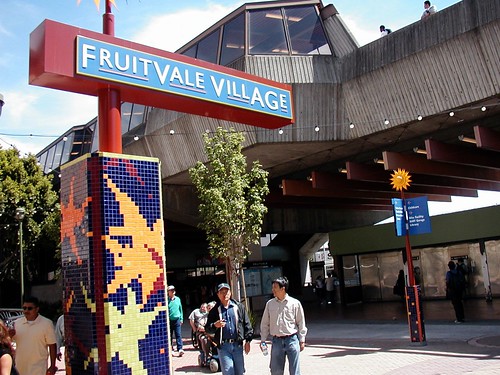"Transit-oriented development" - becoming loose talk?

Posted July 26, 2013 at 1:25PM
In my world of environmentalism and community planning, it’s gotten to the point where we bestow the moniker “transit-oriented development” (or TOD) on any building or group of buildings near public transportation. But we shouldn’t: To make both transit and nearby neighborhoods work together, we must pay as much attention to the neighborhood as to the transit.
Some time back, I wrote an article on the subject, “Transit-oriented development requires more than transit and development.” The two must be coordinated, and that word “oriented” is in the phrase for a reason. As I wrote before, placing development near transit is good; but orienting the development to the transit is better, and more effective for creating a sustainable, well-functioning community.
What does that require? There must be adequate density and a walkable environment; the densest, most walkable portions of the development should be placed closest to the transit stop; commercial and mixed-use buildings should also be close to the stop, with their primary entrances highly accessible to transit passengers, to facilitate multi-purpose trips; buildings and public spaces should be designed to make the area around the transit station or stop feel inviting, comfortable, and secure; design should make it easy for transit and bicycle transfers and vehicle drop-offs; single-family residences may be placed a bit farther away; and so forth.
The visionary designer from whom I – and most everyone else – first learned the phrase, Peter Calthorpe, has now gone so far as to say that maybe we should ditch it altogether. In a provocative and thoughtful interview with Martin C. Pederson in Metropolis, Calthorpe says walkability is actually more important:
Pederson: “On your website you said you wanted to retire the term “transit oriented development.” A term you coined. Why do you want to retire it?”
Calthorpe: “The reality is that people get almost too focused on transit. There’s a symbiotic relationship between it and walkable destinations. You can’t have good transit if you can’t walk when you arrive. So pedestrian-oriented development is really at the heart and soul of great cities. Every city that you love is a city that you want to walk in. We travel the globe in order to walk in great cities. But as an organizing principle for how you shape regional growth, transit oriented development is probably a better term for China [where Calthorpe has been doing a lot of planning work].”
(Emphasis added by me.)
Food for thought, no? I think he is on to something. Maybe it's time to replace TOD with POD as the Holy Grail of smart urbanism.
For myself, I want both transit and walkability but, if I have to choose, I’m picking the latter. I’m on record as saying that we should aspire to make great places, not just environmentally efficient ones. Plopping an apartment building somewhere near a transit stop, by itself, doesn't do that. And I’m also on record as saying that we have become so loose with vocabulary that we frequently render it meaningless. I’m not entirely sure that we should retire “transit-oriented development” as a phrase, but I’m quite sure that we should ask more, and better, of it in practice.
Related posts:
- This is transit-oriented development? (March 8, 2013)
- Has your favorite phrase jumped the shark? The vocabulary of community-building (January 11, 2013)
- Cities, sustainable placemaking, & the careful use of words (September 5, 2012)
- Residents of award-winning, transit-oriented development say no to transit (February 2, 2011)
- A local lesson in transit orientation, walkability and supermarket economics (March 8, 2010)
- Can a Walmart anchor transit-oriented revitalization? (September 3, 2009)
Move your cursor over the images for credit information.
